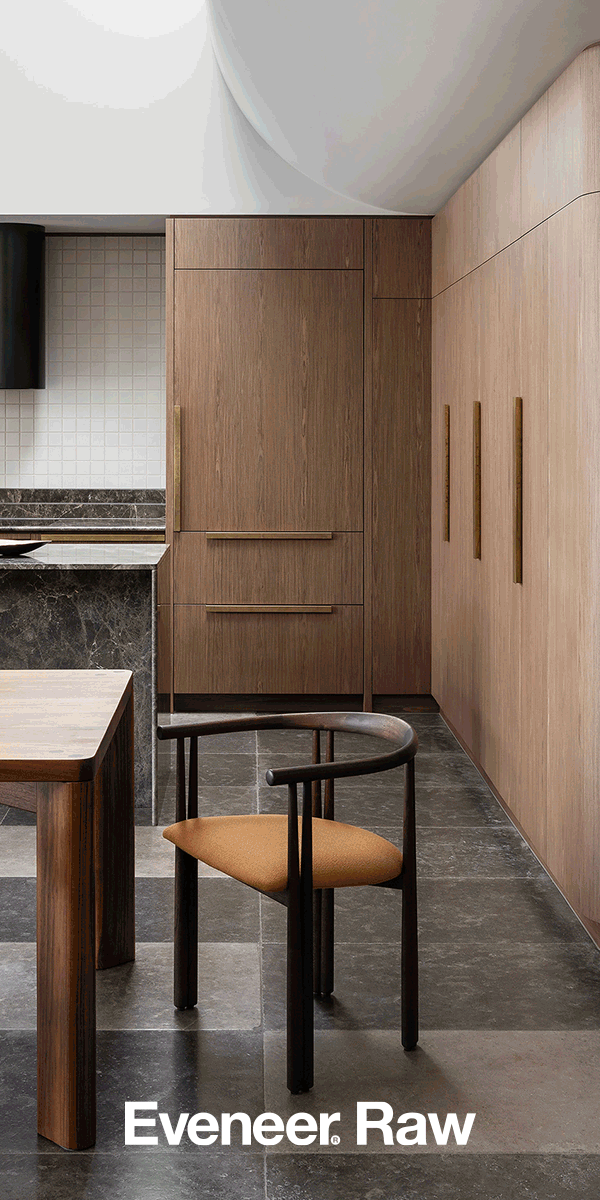Kate Goodwin catches up with architectural practitioner, advocate and Palawa woman Sarah Lynn Rees – recipient of the Australian Institute of...
In Conversation: Jessie French and Tosin Oshinowo
Jessie French, an experimental designer and founder of OTHER MATTER, pioneers the use of algae-based bioplastics and water-based ecologies to explore speculative futures and closed-loop systems of reuse. Tosin Oshinowo, a Lagos-based architect recently named one of the 50 most powerful women in architecture and design by Dezeen, is renowned for her socially responsive approach to commercial, cultural, and civic architecture. While in Melbourne for NGV Melbourne Design Week, Oshinowo met with French to discuss the pleasure of exploring new materials, the ethos of sustainability, accountability for environmental impact, and applying learned knowledge in the real world.
Essay
Jessie French and Tosin Oshinowo
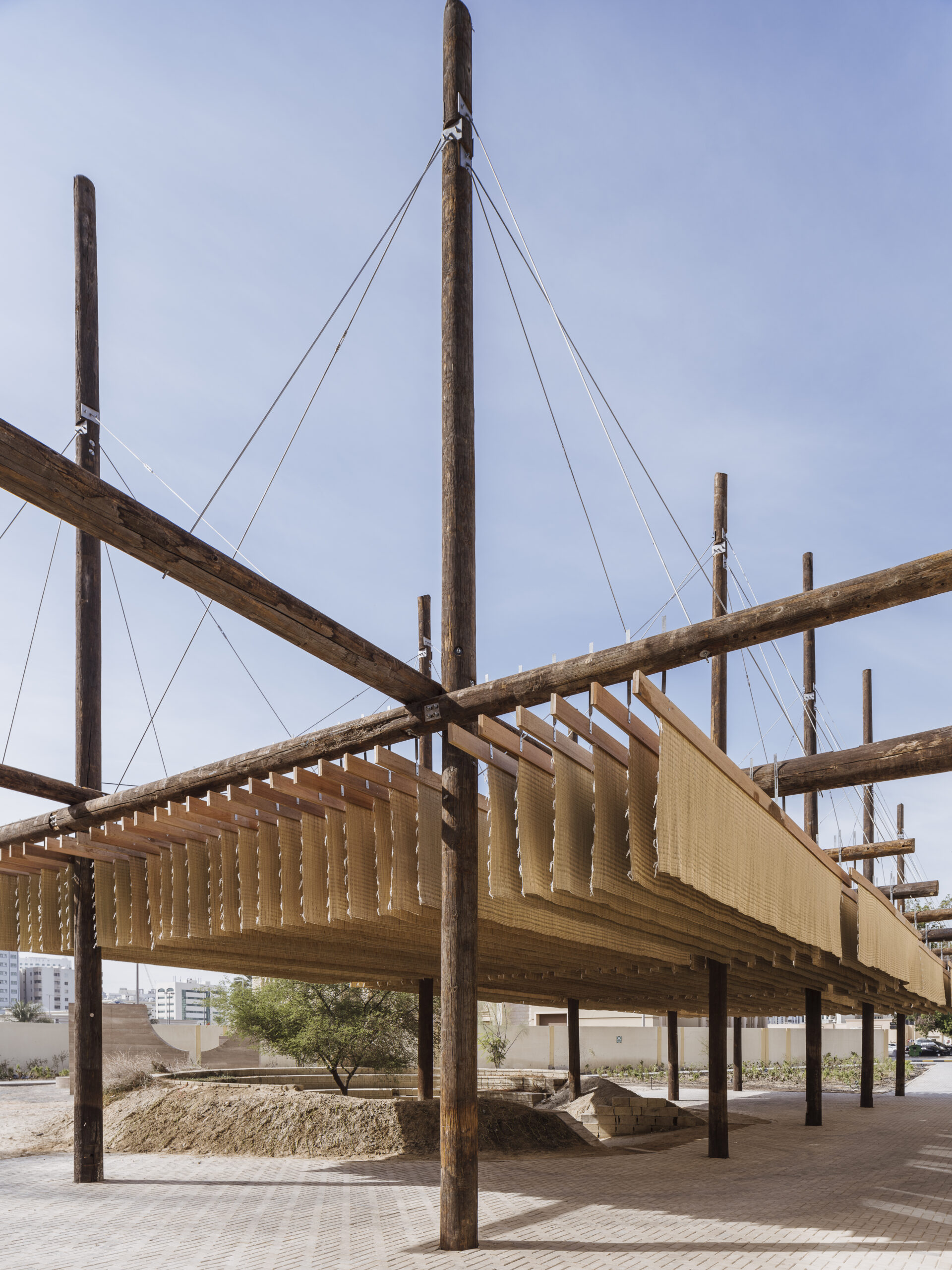
Al Borde’s Raw Threshold for the Sharjah Architecture Triennial 2023, curated by Tosin Oshiwono. Photo: Danko Stjepanovic
TOSIN OSHINOWO I think sustainability is such an abusive word. I don’t think a lot of people who use it understand exactly what they’re saying. The word is used quite heavily in greenwashing, and that’s problematic. But if we even disregard the abuse of the word, I also think there’s too much emphasis placed on sustainability. We have moved beyond the point of ‘zero impact’. We really should be talking about regeneration and renewal, not sustainability. Zero impact is not enough, considering what we’ve done so far.
JESSIE FRENCH Maybe a couple of hundred years ago it was.
TO But not now. And sadly, the conversation we’re having, even at COP28, is about reducing fossil fuels but no one is talking about how we can grow more or how we can add more. We’re still talking carbonisation. The conversation needs to move a lot quicker and a lot further than it currently is.
JF I completely agree. Australia is one of the world’s biggest forward movers, but we are going in the complete wrong direction. It’s crazy.
TO I speak as such an authority, but I also face this challenge. The reality is that architecture is informed by three main building materials: concrete, steel, and glass, which are each big propagators. These three building materials, despite the technological advancement and convenience they have provided us, have completely changed the way we live. Let me add one more material: air conditioning. Glass, concrete, steel, glass and air conditioning have completely changed the way we live! We can afford to completely control our environment, irrespective of our geographical location. They have allowed us to build at a speed and scale that is unprecedented; they have allowed us to negate any other material exploration. I think that’s where the big challenge is.
JF Do you have the opportunity to explore other materials in your practice?
TO In the commercial world of architecture, where you are commissioned by a client to create a building or space for a particular function, very rarely can you explore materials. Material exploration really does come from a very personal interest and a personal journey that can only be done outside of a commercial setting. That is because in a capitalist commercial setting, you rarely have the freedom or the time to explore what is possible. This inability is coupled by the reality of the geo-economic location you are operating from. When I’m practicing as an architect in Lagos, Nigeria, where the scale of construction is very different compared to somewhere like New York or Melbourne, this adds another layer of limitation. However, in Lagos, there is still a very good relationship with artisans, which opens the possibility of experimentation. We might not always have the freedom to explore, like what you’re doing with plastic materials, but we can be more flexible with the building’s form.
JF Beyond scale, do you notice any other differences between a developing context like Lagos and a more industrialised setting such as New York or Melbourne?
TO In Lagos, we don’t have a lot of big manufacturers. There are local people who work closely with glass, for example, but they might only work within a certain span. There’s a limit to what is available. But it does push you to be innovative because then you have to think about the materials available and the technical capacity. You are forced to ask: How can I still create the architecture that I want to create within these limitations? A lot of creativity comes from that. That makes you think about the space differently. It makes you think about the solution in a different manner. But I will say that I personally am becoming a lot more sensitive to this climate topic and the responsibility that I have as a practitioner.
JF Is there a particular project that comes to mind?
TO There is a UN project we did for a displaced community from the insurgency in Buker Al-Ram in the northern part of Nigeria. The brief was that there would be no electricity provided in the individual houses, only for the communal buildings, like the school and the clinic; and in some parts of the market area there would be solar power. Luckily for us, there had been some other rehousing settlements done, not only by the UN, but by other donor agencies. I had the opportunity to visit them and when I arrived, I realised how hot they were inside because they were made with concrete walls and aluminium roofs. Concrete blocks are used across a lot of the global south, in Africa and South America. They’re a stable building material, but they do retain heat during the day.
The area we were building in was Sahara Sahel, which has very dry air and very strong, hard sun. It is not possible to design these buildings without thinking about shade. To combat the heat, we implemented a wheat pole in the roof that allowed air to cross-ventilate. We were not using different building materials, but we were composing them in a way that was slightly different. It’s great to experiment with material, but in a situation where you don’t have that freedom, what can you do with your planning, your consideration for the people and their comfort.

JF Do you know if the architects of these other buildings engaged with the local context?
TO I don’t think they had, because I think if they had, then they would have seen that their proposition did not work. I think that the role of the architect is to understand, to research, and to pay attention. We cannot negate the importance of engagement. Architects need to understand the climate, the orientation to the sun, the environment, the spoilage and the animals that live around. All these things need to be considered as part of the practice.
JF And I assume community is also a key component of your practise?
TO Yes, I was very proud of that UN project because we had quite a few people involved. It was a high-profile project in terms of setting a precedent for how to build differently. On the exterior of the buildings, we worked on something experimental with the community. In my conversations with the women of the community, I learned that they were interested in spaces for children, spaces for congregating, and spaces for collective activities, whereas the men were very concerned with security and access to farmland. Understanding them culturally and giving them that space to be able to express themselves was important. In a conversation I had with the men, I asked them about their preference for the building’s colour. It became clear to me that the original colour referenced the colour of the traditional African walls and felt familiar.
A friend had been developing this render external finish, which mixes soil with a small quantity of cement and a bonding agent to finish internal and external wall surfaces without any paint. We were able to replicate a traditional wall using this finish, even though it was constructed with a concrete block. I’m very mindful that we created the aesthetic of tradition, but not necessarily the functionality of it.
The thing about architecture is that it’s one of those professions where you have two fractions: you’ve got the academics, and you have the practitioners, and they’re not speaking to each other. It’s one thing to be a theorist, but if we don’t get people in practice to implement our learnings, then we’re never going to create a solution. It’s the practicing architects who are going to be able to realise this knowledge.
JF You also need to test the academic theories. That’s the experimentation. You have to see how it runs in the real world. You can’t theorise everything and you can’t run a model of how everything works.
TO And even if you theorise everything, if you don’t test it, then it remains a theory. It never becomes a reality. Even in your space with materials, it might look and feel right, but until you check its durability, and how it works in the field, you cannot know if it is actually going to function efficiently.
JF Totally. And when you roll it out, you’ll find that there are other considerations that can really inform the innovation. That’s really where the solution is. You mentioned that you have greater access to craftspeople and spoke of your friend who created the render walls. Are there any other innovations or experimentations that you have worked on?
TO We experiment all the time. We understand the value that different people bring to a project. And we understand the importance of acknowledging their value. Everyone should feel important and considered in whatever they do. As a young practise in Lagos, we worked closely with artisans. We have clients who are probably about my age and don’t have deep pockets and so we had to find innovative ways of implementing design solutions. And the most accessible way to do that was through the artisans, and the carpenters and the brick layers.
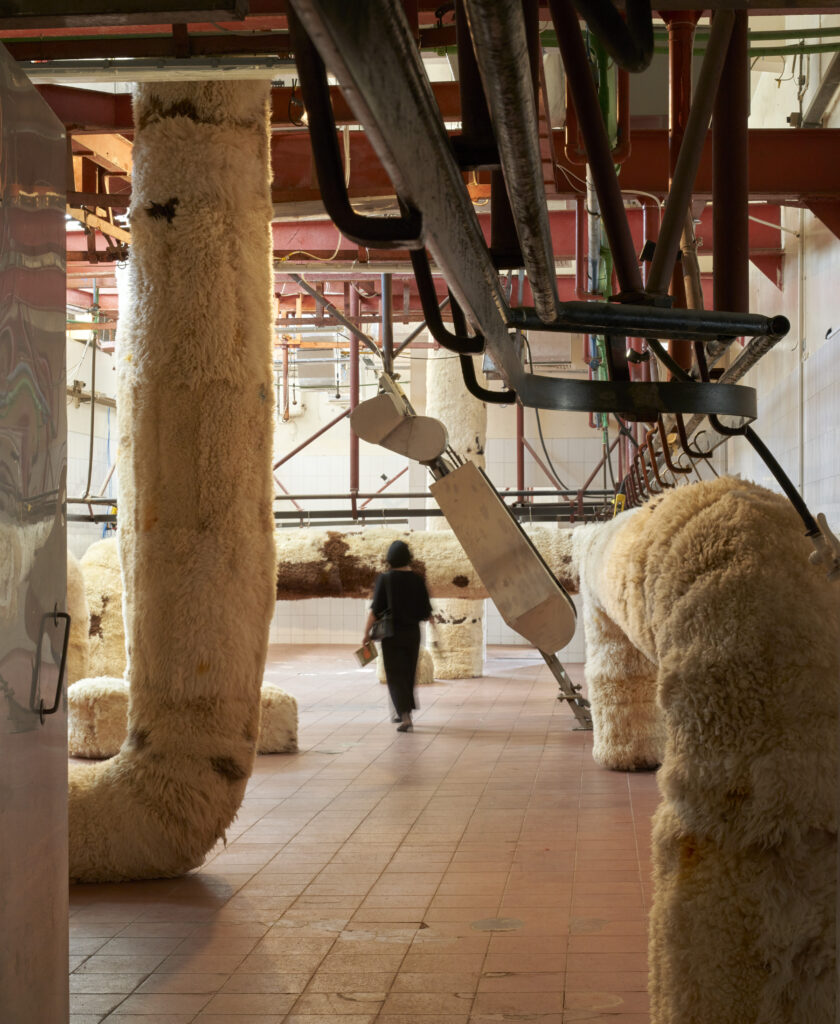
JF You’ve also been doing some curatorial work. How have you found splitting your time between curation and architecture?
TO I feel very fortunate to wear many hats and have each hat inform a different part of my practice. I went to the Architecture Association in London, which is a very prestigious design school. After that, I got a job at OMA in Rotterdam, and approached the profession with the understanding that culture played a very important role in design. After OMA, I returned to Lagos and worked at a local practice. This all happened at a time when Nigeria had become a part of the Republic and had an administration that created quite an enabling environment; you were beginning to see the fruits of stability across the creative industry. Fashion, music, film, photography, and the visual arts, generally, were all beginning to find a place, not just locally but also globally. All of a sudden, Nigeria became accessible to the international community and a lot was happening. And that was when I got interested in the creative scene.
Initially, I did some collaborative work with Lagos Photo. And then, in 2019, I became the co-curator at the Lagos Biennial. That was really amazing because I had no prior experience curating. What is so powerful about being a co-curator is that you’re able to learn from your peers. There is this beautiful synergy and learning that happens in a very respectful manner. I have had the exact same experience working with the Sharjah Architecture Triennial. When I look back at my experience with Sharja, I can see how much I’ve grown and evolved, and I feel very fortunate.
JF Your project with Sharja focused on the under-celebrated and suppressed Indigenous practices in the global south region.
TO Yes, much of modernity has subconsciously suppressed other cultures. Unfortunately, singular dominant cultures have negated the values that indigenous cultures would have provided. When we consider how these cultures coexisted in balance with ecology, compared to what has happened with the dominant culture, which has led to industrialisation and carbonisation, we realise something has been lost. First, we need to recognise the strong value of indigenous practices and begin learning from them. It’s interesting. As I read about your focus on materials and material exploration before this interview, I couldn’t help but smile. It was so exciting to see this material exploration, even though you’re not really creating anything. You’re composing it as material now, but you’re working with things that have already existed. It’s not new. But in its refinement, it is. In an exhibition at the Venice Biennale in the British Pavillion, an artist shares a statement about water, explaining how everything that we have and everything that we need has been here before. It’s a composition of parts.
JF Yes exactly. It’s just that the plastic I use hasn’t been commonly adopted. The systems just haven’t been there.
TO Yes, exactly. And I think that’s what we need to develop. Systems!
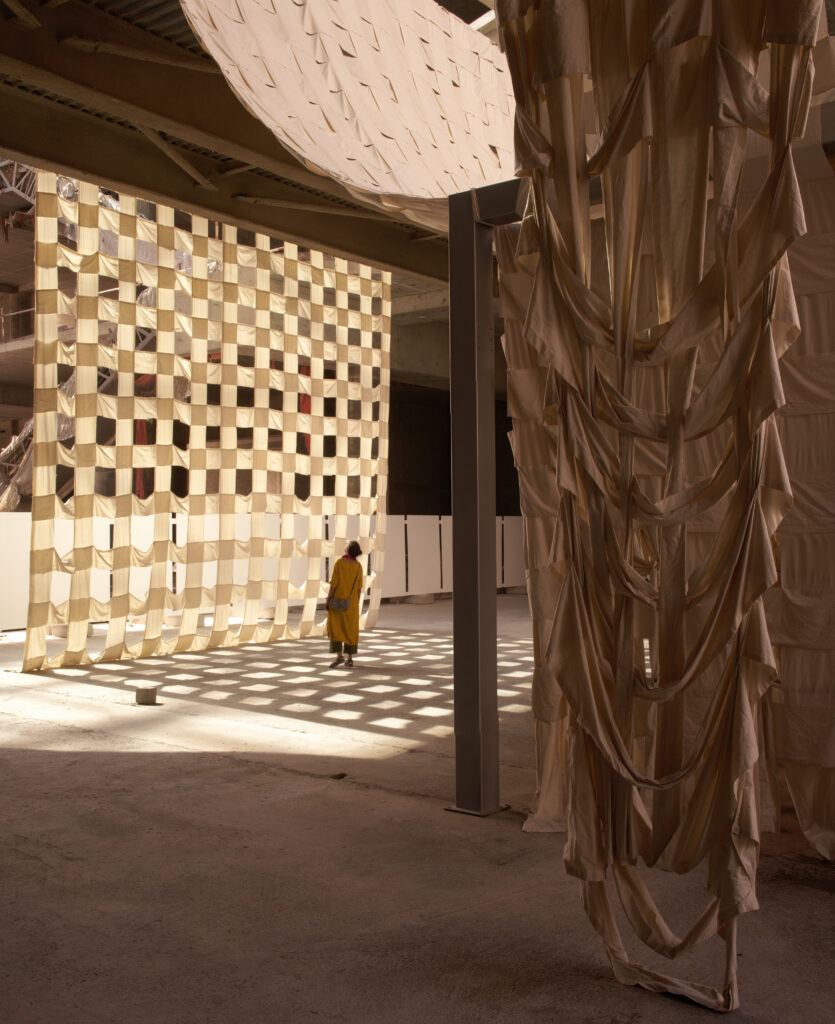
JF There’s a really beautiful quote by Donna Haraway that is actually written out in my studio. She’s a Canadian theorist based in New York at the New School. She wrote a book called Plastic Matter, which tracks the cultural history of our engagement with plastics. The book starts with the Haraway quote and discusses how our rush towards a futuristic vision often tries to escape the responsibility of addressing the past. It suggests that before we look to a new future, we need to understand why we are so eager to embrace it and what issues we are trying to leave behind. This future that we see as salvation needs to be interrogated and unpacked. I think that’s a lot of what your work is doing, really.
I also wanted to ask you about the Nigerian designers that you’ve worked with. You mentioned you had some really close collaborations when you were doing the Lagos Biennial and the Shajas.
TO There’s a really interesting Nigerian designer named Nifemi Marcus-Bello who is doing exceptionally well and is quite experimental. He recently showcased his work in Sharjah, where he designed the WAAF Pavillion. He organised an artisanal collaboration across two cities, Sharjah and Lagos, by giving artisans in both locations a series of drawings to interpret. Although they interpreted them exactly the same way, the finishings were done in different materials, beautifully showcasing the transient nature of artisanal knowledge. Nafami Belo has also been very experimental in his designs. A few years ago, he created a pavillion in Lagos using materials typically used for sweeping floors in Nigeria. These brooms are made from the hairs or leaves of coconut trees and resemble witches’ brooms.
He dyed the hairs indigo to make them purple and then incorporated them into the walls of the pavillion. It was such a beautiful structure created from a common everyday material. Finding people who can transform mundane objects into something truly beautiful is quite fascinating. Nafami Belo is definitely someone people should know about.
I’d also like to mention the architect Papa Omotayo, a very good friend of mine who also showcased his work in Sharjah. He has a stunning project he did for Yinka Shonibare outside of Lagos. It was for Shonibare’s residency program at the Gas Foundation in Nigeria.
An essential part of collaboration is the patron-client relationship. A good patron understands the value of your craft and experimentation, is patient, and is concerned with reducing carbon emissions. For that project, Papa made laterite bricks from the local soil. Every single brick used in the construction was made from the ground. Building with laterite offers well-being benefits: the air is cleaner and filtered, and the material keeps the building cool during the day and warm at night. It’s a beautiful, contemporary building using traditional materials, made possible by a patron who allowed for experimentation.
JF I noticed that you had just graduated from business school.
TO Yes, two years ago now.
JF I also studied business and found it really interesting. I felt like I was almost reading the rule book of Monopoly, realising how it all works. And it really helps me understand the mechanics of how this capitalist world works.
TO I relate business school to history. History was removed from the curriculum in Nigeria in the 1970s, so I didn’t learn it in school. During COVID, I took an online history course covering the year 1400 to the present day. When you study history, you come to understand that a number of decisions made by people who are no longer alive have shaped the world as it is today. This knowledge prevents you from being angry about where we are today because you understand the context. Knowledge is power, and being informed helps you make better decisions.
Creatives don't think the same way as business people. If you don’t understand how business people work, you can’t function efficiently in the business world. Business school taught me to separate emotion from rational decision-making to get ahead. I now understand my clients better. For example, in one course, they mentioned that architects often get too absorbed in their own existence. As an architect, if you understand your client’s concerns, you’ll be in a better position to achieve your goals while keeping your client happy and securing your job. I learned many things, including the importance of people in your practice and the value of maintaining a happy team. These are not things you typically learn in design school. I believe the realities of running a business need to be taught to more people. Some have this knowledge inherently, but I didn’t. I find that most practitioners or architects will eventually work for themselves, so this knowledge is crucial.
JF When you unpick how things work, particularly from an economic point of view, it becomes really interesting. My degree focused heavily on economics, which is what I’m most interested in. I found it fascinating to read the original papers on planned obsolescence. The original concept was quite different from how we think of it today. For example, imagine you were a furniture maker at the beginning of the industrial revolution. If you made a table and sold it, the idea was that if the customer brought it back within five or ten years, they would get a 20% refund. You would then take the table back and remake it into something new. It was meant to be a proper cyclical recycling process.
TO How beautiful. What happened?
JF Postwar there was a reassure to increase sales and this idea of constant growth emerged. Cheaper production, globalisation, and a lower cost of labour.
TO There’s exploitation at every end. There’s exploitation at the production and there’s exploitation at the waste. Our table is going to be discarded in a very irresponsible way. It’s going to go into a landfill. It’s going to go into the ocean and be thrown somewhere. We have many problems here. We have the problem of things not lasting as long as they should. And we have the problem of things being produced and discarded cheaply.
The amount of waste we’re producing is astronomical. I remember a time in Nigeria when we used to have Coca-Cola in glass bottles. And if you broke a bottle, you would get in trouble because your mommy had to then go and buy a new bottle from the bottling company. Then, in the late 1990s, they scrapped that and replaced the glass with plastic. And that’s when we started seeing a lot of pollution in the waterways, on the beach. And no one’s accountable for it.
JF No one’s accountable.
TO We can’t continue this trajectory.
JF We’ve been talking for ages. Before we end, I’m interested in knowing how you found working at OMA.
TO I enjoyed it, but I wouldn’t work there again.
JF Well, you’ve got your own practise now.
TO I think OMA is a very magical place. You get to work on weird and wacky stuff. Anywhere else, you would never get the opportunity to suggest something. There was such a freedom. It really was a very young office. I mean, it’s predominantly made up of people straight out of university. You have all the energy and zest in the world, and they squeeze it out of you and shoot you at the other end. I learned more at OMA than I did in the five years at school. I was put in a pressure pot of production, production, production.
JF And you’re in the real world.
TO Yes your applying your knowledge in the real world. A practice that I try to continue to this day.
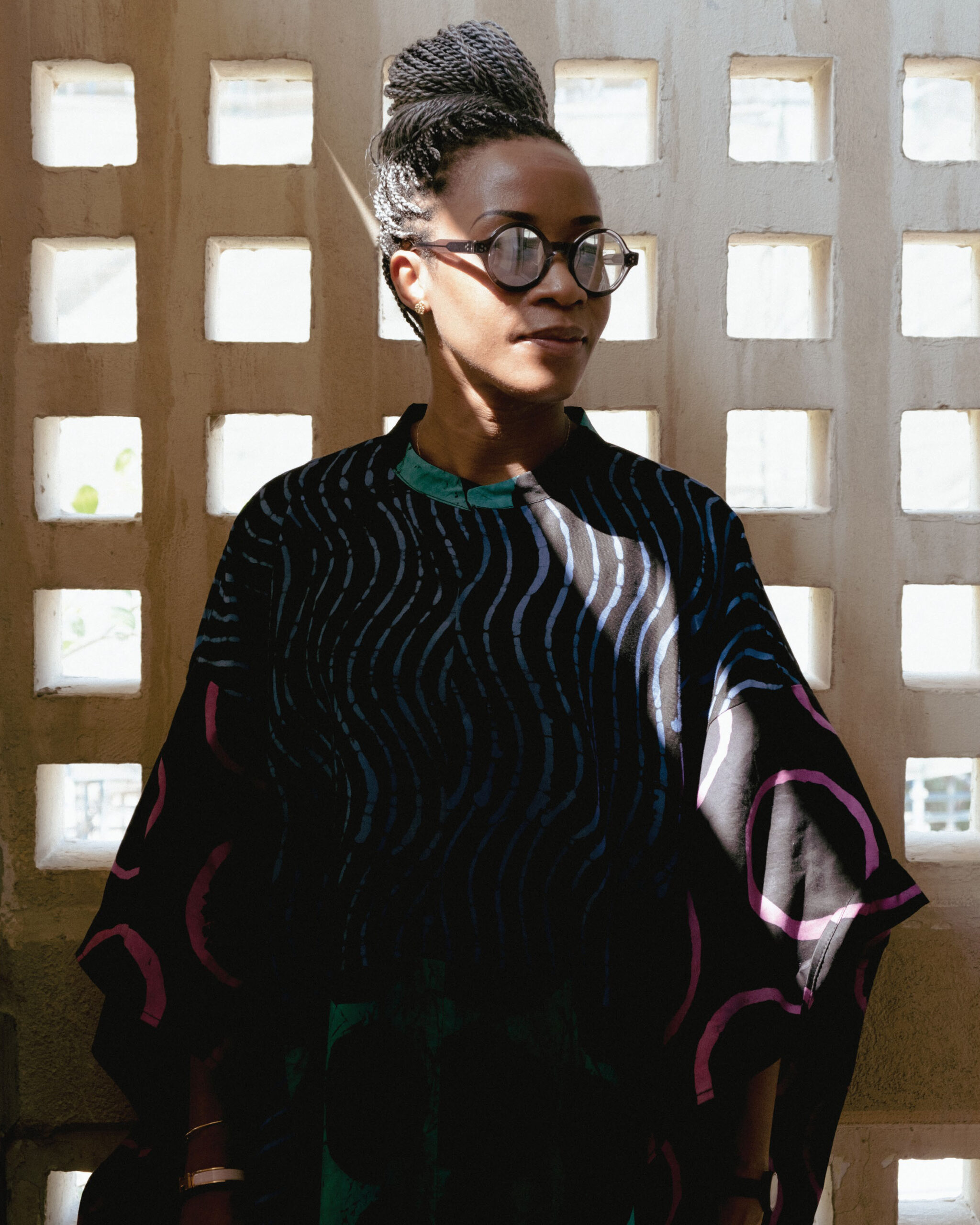
Portrait of Tosin Oshinowo. Image photographed for Identity magazine. Photo: Bashar Belal

